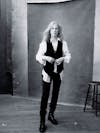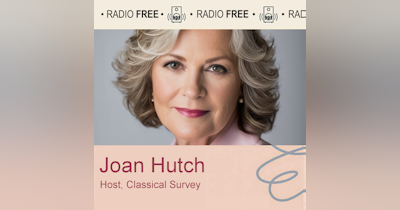Photo courtesy of Pirelli and Annie Leibowitz
Quoting "Jesus died for somebody’s sins but not mine" is an easy way not to stop smoking with Allen Carr and start an article on Patti Smith. It is trivial but at least she wasn't called the godmother of punk rock. Nevertheless, the big question remains: "What new can be told about Patti Smith?". She herself is an outstanding storyteller. Perhaps that's a good place to start.
Her look, be it a black turtleneck like in French movies of the 60s, a man's shirt and suit, a velvet dress without frills, homemade jewelry made of feathers, stones and fishing tacks, rough boots or, on the contrary, weightless ballet flats, has passed unchanged through almost half a century, and only gained in relevance. Just to be sure, it is enough to look at her photo in the 2016 Pirelli calendar, where Patti, almost like on the cover of the album Horses (1975), was again in a white shirt, vest, and strict pants. Photographer Annie Leibovitz, who shot the groundbreaking calendar, eschewing traditional nude shots in favor of photos of unique women, said she wanted to present them all as they are. Patti didn't go for something outstanding – an intense stare, a cross chest, tangled hair, and a traditional set of clothes. However, is that really who she is, or is that who she always wanted to be?
Never hiding it, Patti molded herself in the image of her idols. This was noted by Patti's contemporary, Penny Arcade, who said: "Patti lived her whole life pretending to be John Lennon…or Brian Jones, or some other rock star. She wanted to look like Keith Richards, smoke like Jeanne Moreau, walk like Bob Dylan".
It's no coincidence that Patti made her first record with Lenny Kaye in 1974 at Electric Lady, a studio built by Jimi Hendrix. An early recording, the non-album track, "Hey Joe" was named in his honor, and just a year later "Elegie", the last track of the album Horses, was already a requiem for him.
Patti's desire to harmonize poetry and sound art was also characteristic of her predecessors – the aforementioned Hendrix as well as Jim Morrison. The song "Break it up" from Horses is nothing short of a fantasy where Morrison, half man, half stone, stands in chains in the middle of a wasteland. His spirit breaks out of its marble shell and revives rock.
In the seventies, Patti was very concerned that rock and roll was degenerating into show business. All her heroes were either dead or had given up. Being among the last lovers of long rambling compositions and twenty-minute improvisations, Patti was also one of the first reflexive rock stars so concerned with musical history, even if it was the most popular of forms. This can be seen and heard in her work, with the naked eye and ear, even if one has the scantest knowledge of rock.
Of course, one could object and recall Patti's lines from "Babelogue": “I haven't fucked much with the past, but I've fucked plenty with the future". But the paradox is that the main leitmotif of the punk revolution is nostalgic sadness. So even based on that alone, it's safe to say Patti is bluffing.
What is also puzzling to many in Patti Smith’s story is that at the height of her popularity, she dropped everything and moved with her husband near Detroit to raise their children, and then suddenly resurrected 17 years later. One might think, seeing on stage not a bony plague in clothes but a grandmother with grey braids, that Patti is indeed nostalgic about her own past.
Even more so after the 2010 release of her literary revelation Just Kids, which is mostly about her relationship with her best friend and first love, artist, and fetish photographer Robert Mapplethorpe. But upon reading it, it's hard not to believe that the book is a promise made to Mapplethorpe shortly before his death from AIDS in 1989.
Five years later, Patti Smith's husband and brother also passed away a month apart. Therefore, Patti's return to the stage in 1996 seems to be more an act of overcoming her own grief. Moreover, Patti's reincarnated band's second LP was also a reaction to the deaths of two of her friends and inspirations, Allen Ginsberg and William Burroughs.
So, it's pointless to say she's blindly nostalgic. She's not shy about saying she mostly listens to Glenn Gould and hardly knows new names in music. She continues the tradition of three chords and a word and certainly doesn't do anything revolutionary in music anymore, and mostly tours Horses. But it's hardly like she's trying to turn back the clock.
She not only publishes new albums, but poetry collections and books. She even won the U.S. National Book Award in 2010. We don't know if she is who she is, but she is someone we've always known her to be. And rightfully so, the Pirelli calendar chose her for series of portraits of extraordinary women. Patti is one of them.
###
Whirl Away:
Let Amy Schumer Inspire You to Get Naked
Death in Vegas: Punk Rock and Nostalgia
Feeling the Bohemian Pulse: Locating Patti Smith Within a Post-Beat Tradition






